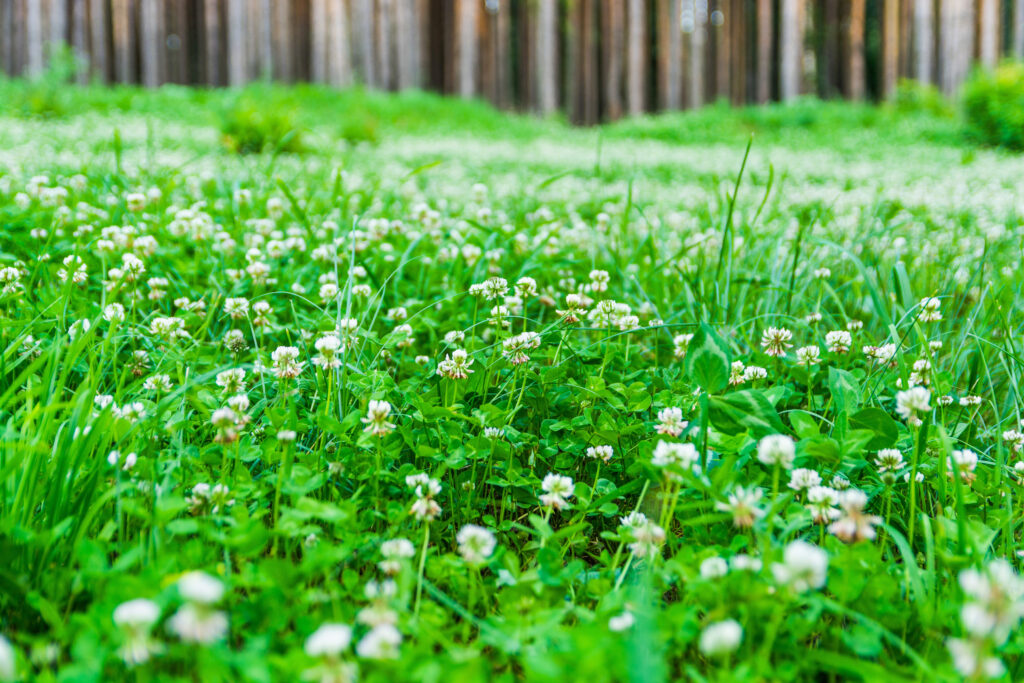In an era marked by the escalating costs of water and energy, homeowners are increasingly seeking environmentally sustainable alternatives to their traditional turf lawns. Enter clover seeds for lawn, a rising trend in landscaping that offers a host of benefits, from cost-effectiveness to eco-friendliness. Clover lawns present an attractive option for those looking to reduce their environmental footprint while still maintaining a lush, green outdoor space. Let’s delve into the advantages of clover seeds and why they might be the perfect choice for your yard.
The Rise of Clover Lawns
Clover lawns have gained popularity in recent years as a viable alternative to conventional grass lawns, particularly in areas with challenging growing conditions such as shade or poor soil quality. Clover lawns come in two main types: pure clover, suitable for low to moderate foot-traffic areas, and mixed grass/clover, ideal for areas with moderate to high foot-traffic. The versatility of mixed grass/clover lawns makes them a popular choice among homeowners seeking a low-maintenance yet durable solution for their outdoor spaces.
Advantages of Clover Seeds
Environmental Sustainability: Perhaps the most significant advantage of clover lawns is their environmental sustainability. Clover is a nitrogen-fixing plant, meaning it can absorb nitrogen from the air and convert it into a form that enriches the soil. This natural fertilization process eliminates the need for chemical fertilizers, reducing both cost and environmental impact.
Water Conservation: With water costs on the rise, homeowners are increasingly looking for ways to reduce their water consumption. Clover seeds offer a solution, as they require less water compared to traditional grass lawns. Thanks to their deep root systems, clover plants can access water stored deeper in the soil, making them more drought-tolerant and water-efficient.
Year-Round Greenery: Unlike many grass varieties that go dormant in the winter, clover lawns maintain their green color throughout the year. This means you can enjoy a vibrant lawn even during the colder months, adding visual appeal to your outdoor space regardless of the season.
Weed Suppression: Clover’s dense growth habit acts as a natural weed suppressor, preventing weed seeds from germinating and competing with the grass. This reduces the need for chemical herbicides and manual weeding, saving both time and effort in lawn maintenance.
Versatility in Soil Conditions: Clover is known for its ability to thrive in a wide range of soil conditions, including poor-draining soils and compacted earth. This resilience makes it an excellent choice for areas where traditional grasses struggle to grow, such as newly constructed landscapes or high-traffic zones.
Soft Texture and Aesthetic Appeal: Clovers offer a soft, comfortable texture underfoot, making them ideal for outdoor activities and barefoot strolls. Additionally, clover’s attractive white blooms add visual interest to the lawn, enhancing its overall aesthetic appeal.
Considerations Before Planting Clover
While clover lawns offer numerous benefits, it’s essential to consider your specific needs and preferences before making the switch. For instance, pure clover lawns may not be suitable for areas with heavy foot traffic, as clover plants are more delicate than traditional grasses. Additionally, homeowners with allergies to bee stings should exercise caution, as clover’s white blooms attract pollinators like bees and butterflies.
Conclusion
In conclusion, clover lawns represent a sustainable, cost-effective, and aesthetically pleasing alternative to traditional grass lawns. By harnessing the natural benefits of clover plants, homeowners can create lush, green outdoor spaces while minimizing their environmental impact and reducing maintenance requirements. Whether you opt for a pure clover lawn or a mixed grass/clover blend, embracing clover as part of your landscaping strategy can lead to a healthier, greener, and more sustainable yard for years to come.
